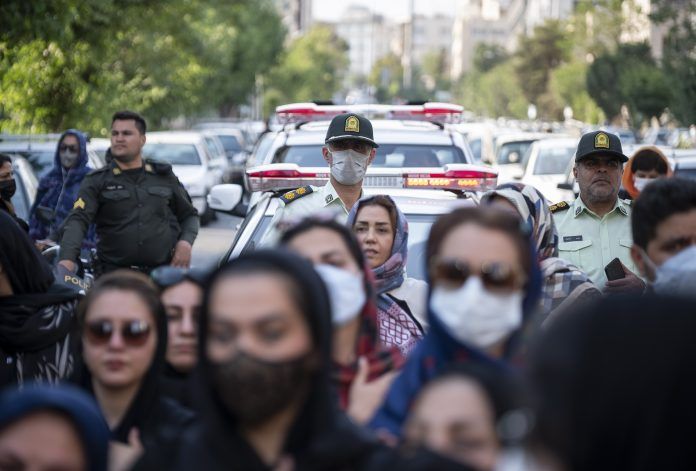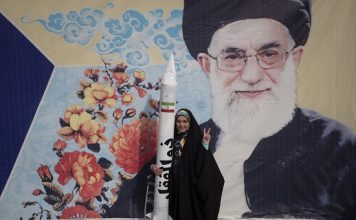
By Kayhan Life Staff
A woman is killed by a male family member every four days in Iran, according to the Tehran-based Shargh Daily Online.
In the first three months of the Iranian year (March 21-June 20), at least 27 women died across Iran at the hands of a male member of their families in “honor killings,” the report said.
In an article headlined “Femicide Every Four Days,” Shargh said that at least 165 women were killed by their husbands or a male member of their families in Iran in the past two years.
Thousands of Child Marriages are Celebrated In Iran Each Year
But a group called StopFemicideIran said the 165 deaths over a two-year period are “a miscalculation or intentional attempt to undermine the horrific scale of femicide in Iran.” According to the group, there were 191 specific acts of femicide in the year 2022 alone.
“The Iranian regime perpetuates this system of oppression against women and girls by failing to bring perpetrators of femicide to justice in a discriminatory legal system that regards women as half human and worth less compared to men,” said StopFemicideIran in a statement, adding that its 2022 report was published on its website www.StopFemicideIran.org.
Of the 165 deaths reported by Shargh Daily Online, 87 (52.7 percent) resulted from “family disputes,” 38 (23 percent) were “honor killings,” and 10 (6.1 percent) were caused by “financial problems,” Shargh explained. The reasons for the remaining 30 (18.2 percent) of the femicide were “unknown.”
“Of the 165 deaths in the past two years, 108 women (65.5 percent) were killed by their husbands, 17 (10.3 percent) murdered by their brothers, 9 (5.5 percent) by their sons, 13 (7.9 percent) by their fathers, and 18 (10.9 percent) by other male members of their families, including their father-in-law, brother-in-law, cousins or former husbands,” the report noted.
“Of the 165 deaths, 43 (26.1 percent) resulted from gunshots (hunting rifles, Colt handguns, Kalashnikov); 40 (24.2 percent) were stabbed; 35 (21.2 percent) strangled (with hands, scarves, bedsheets); 4 (2.4 percent) killed by a hammer; 2 (1.2 percent) were pushed; 6 (3.6 percent) set on fire after being doused with gasoline, or while sitting in their cars or homes; 5 (3.0 percent) were killed by unknown means; the remaining 30 (18.2 percent) murdered by other means. In 11 instances, the killer had committed suicide,” the report added.
Women’s Day Protesters Rally for Rights, With Focus on Iran and Afghanistan
Shargh’s report showed that contrary to the common belief that most femicide occurs in rural areas, 41 of the 165 murders happened in Tehran Province.
Shargh’s report included an interview with Fatima Babakhani, a women’s rights activist who said: “Unfortunately, there are many instances of men treating women as their properties.”
“For instance, girls must have their fathers’ consent for marriage, or under civil laws, women must submit to their husband’s demands, and fathers who kill their children [daughters] may be immune from Ghasas [vengeful justice/retribution/eye for an eye],” Ms. Babakhani explained.
“These are some examples of ways men control women,” Babakhani noted. “The situation is compounded by tribal and regional sub-cultures whose moral codes and traditions compel women to submit to men. Under such climate, any incident may be interpreted as a family dispute to avoid the need for further explanation.”
“The ambiguous phrase ‘family conflict,’ is a misleading description that tries to minimize the severity of ‘honor killings, and crimes against women,” Babakhani argued. “A society and public’s understanding and response to an event differs from how it is described and explained.”
“The murder of a woman under any circumstances is tragic, and we must condemn femicide,” Babakhani told Shargh, “However, naturally the public’s sensitivity is diminished somewhat when ‘honor killings,’ rape by a family member, and child abuse are lumped together and described as family conflict.”
“Many cases of femicide are recorded as suicide, given the lack of clear and effective laws,” Babakhani added. “Instances of women who are driven to suicide and kill themselves by hanging, or self-immolation, or ingesting poison are also recorded as suicide. There are also those situations when an ‘honor killing’ is disguised as a suicide.”
In its report, Shargh cited “official data on femicide reported by the state media,” but Iranian authorities do not always record murders of women as femicide or even investigate them as a criminal offense. The official data does not include women driven to suicide because of family pressures, domestic abuse, or forced child marriages.
In an interview with Independent Persian on June 9, a social worker and women’s rights activist in Sanandaj, the capital of the western province of Kurdistan, said that at least 38 “honor killings” had occurred in the province since March 21.
“Most of these killings are not reported by the media because some traditional families fear it would shame them,” the unnamed social worker explained. “Also, provincial security and judges threaten any journalist or social worker who reports these incidents with prosecution and imprisonment.”
Iranian Protesters Remain Defiant in the Face of Violent and Brutal Regime Oppression
Iran’s Government Must Stop Executions of Protesters, Says UN Fact-Finding Mission











